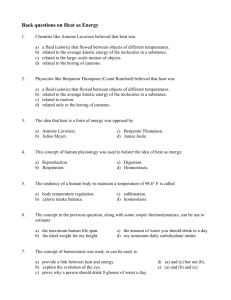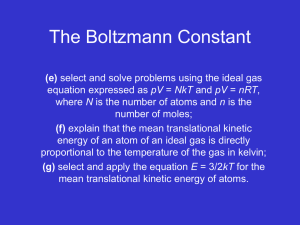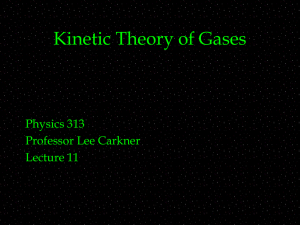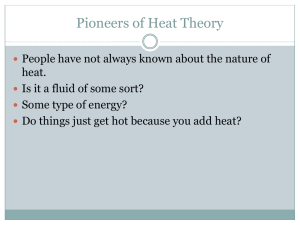Internal Energy, Heat, and Specific Heat
advertisement
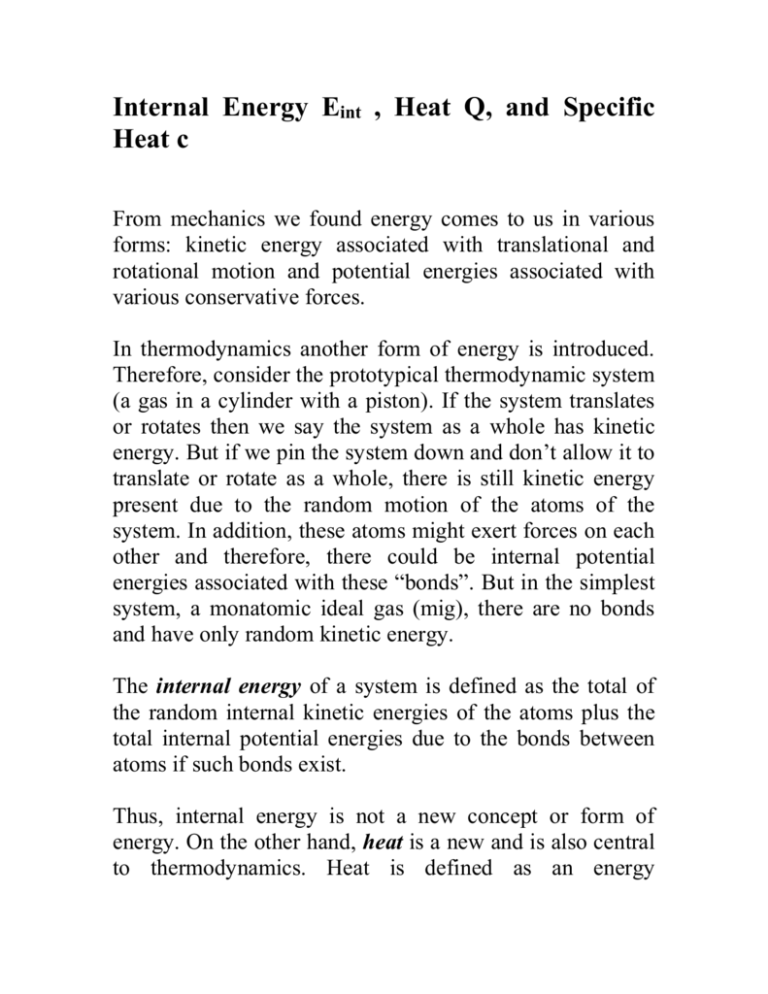
Internal Energy Eint , Heat Q, and Specific Heat c From mechanics we found energy comes to us in various forms: kinetic energy associated with translational and rotational motion and potential energies associated with various conservative forces. In thermodynamics another form of energy is introduced. Therefore, consider the prototypical thermodynamic system (a gas in a cylinder with a piston). If the system translates or rotates then we say the system as a whole has kinetic energy. But if we pin the system down and don’t allow it to translate or rotate as a whole, there is still kinetic energy present due to the random motion of the atoms of the system. In addition, these atoms might exert forces on each other and therefore, there could be internal potential energies associated with these “bonds”. But in the simplest system, a monatomic ideal gas (mig), there are no bonds and have only random kinetic energy. The internal energy of a system is defined as the total of the random internal kinetic energies of the atoms plus the total internal potential energies due to the bonds between atoms if such bonds exist. Thus, internal energy is not a new concept or form of energy. On the other hand, heat is a new and is also central to thermodynamics. Heat is defined as an energy TRANSFER process. Heat is an energy transfer between two objects of different temperatures due only to their temperature difference. Ultimately the transfer is due to the collisions between the atoms—thus, the connection of heat with mechanics. This notion of heat is called the mechanical model of heat and it became the dominant view in the mid-1800’s following the famous Joule mechanical equivalent of heat experiment. Before Joule people believed heat to be an invisible, weightless fluid that flowed between two objects that have a different temperature. The fluid was called caloric, therefore, this was called the caloric model of heat. A useful analogy is a pond and rain. A pond contains so much water (like internal energy) but this can increase due to rain (like heat or work). The thermal properties of an object or material are an important way of characterizing the system. One of the most important thermal properties is found when an amount of energy, Q, is delivered to the object by heating. Often Q causes the temperature of the object to change by T. If for a given T, Q has to be large, we say the object can “hold a lot of heat” and therefore, it has a large heat capacity, C, defined by, C Q/T. C is a property of an object, it will depend on the composition of the object but also the mass of the object. Consequently, for the same material, C will be bigger if there is a lot of mass of the material present compared to having a small amount of the material. A related term called specific heat, c, depends only on the material of the object and not on the mass of the object, c C/m = Q/mT. Measured values of c are tabulated in your textbook. Values of C are not given in tables since C depends on the amount of mass present. Rearranging we have, Q = mcT. APPLICATION: Calorimetry In calorimetry we mix together two substances that start with different temperatures and wait until thermal equilibrium is achieved at a final temperature, Tf. Measuring the mass of each constitutent and all of these temperatures allows one to find the specific heat of one of the constituents provided you know the specific heat of the other constituent. The fundamental principle used is energy conservation, which takes the guise |Qgained by one constituent| = |Qloss by the other constituent| EXAMPLES [in class]

